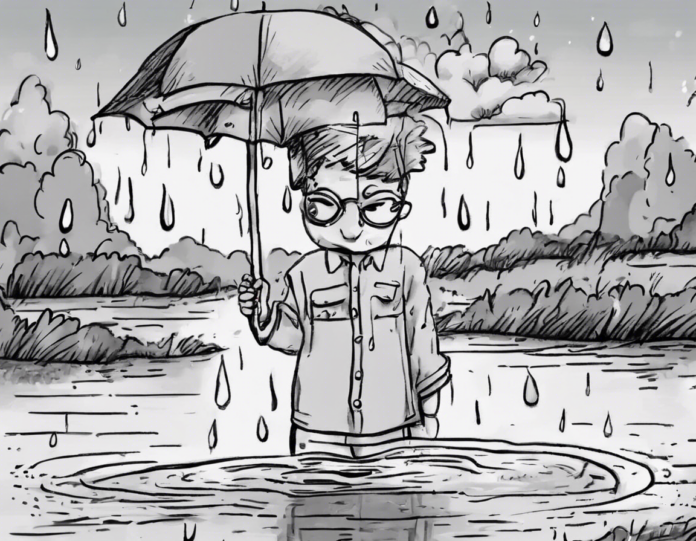India is a land rich in culture, diversity, and experiences. One of the most awaited seasons in India is the monsoon season, which typically occurs from June to September. The monsoon brings relief from the scorching heat and rejuvenates the lands, making it a magical time to witness the beauty of nature. In this blog post, we will delve into the intricacies of the Indian monsoon, exploring its impact, significance, and the unique experiences it offers.
Understanding the Indian Monsoon
The Indian monsoon is a complex weather phenomenon driven by the seasonal reversal of wind direction. The southwest monsoon winds carry moisture-laden air from the Indian Ocean, causing rainfall across the Indian subcontinent. This annual event is crucial for agriculture, as the rains replenish water sources and nourish crops, sustaining millions of livelihoods.
Monsoon Season in India
The Phases of Monsoon
The monsoon season in India is typically divided into two phases: the southwest monsoon and the northeast monsoon. The southwest monsoon, which begins in June, brings the majority of the rainfall to the region, while the northeast monsoon, occurring from October to December, affects the southern states.
Rainfall Distribution
India experiences spatial and temporal variations in rainfall during the monsoon season. The western coast and northeastern regions receive heavy rainfall, while some parts of the country, such as Rajasthan and parts of the Deccan Plateau, experience arid conditions known as the rain shadow effect.
Impact of Monsoon on Agriculture
Agricultural Practices
Agriculture in India is heavily dependent on the monsoon, with a significant portion of farmland relying on rainfed irrigation. Farmers eagerly await the monsoon, as timely and adequate rainfall is essential for sowing, growth, and maturation of crops.
Crop Patterns
The monsoon season dictates crop patterns in India, with farmers planting crops like rice, millet, and pulses that thrive in wet conditions. In regions with less rainfall, farmers opt for drought-resistant crops or employ water management techniques like rainwater harvesting.
Challenges Faced
Erratic monsoons, delayed onset, or excessive rainfall can lead to crop failures, affecting food security and farmer livelihoods. Climate change has also amplified these challenges, highlighting the need for sustainable agricultural practices and water management strategies.
Experience the Monsoon in India
Monsoon Tourism
The monsoon season presents a unique opportunity for monsoon tourism in India. From the lush green landscapes of Kerala to the misty hills of Meghalaya, each region offers a distinct monsoon experience. Travelers can indulge in trekking, waterfalls, and cultural festivals during this time.
Ayurveda and Monsoon
Ayurveda, the ancient Indian healing system, emphasizes the significance of the monsoon season for rejuvenation and detoxification. Ayurvedic practices such as Panchakarma are believed to be more effective during the monsoon, cleansing the body of toxins accumulated during the previous seasons.
Monsoon Delicacies
The monsoon season brings a myriad of culinary delights in India. From piping hot chai and pakoras to regional specialties like bhuttas (grilled corn) and bhajiyas, the Indian monsoon offers a feast for the senses. These comfort foods are best enjoyed with a backdrop of rain-washed scenery.
Monsoon Safety and Precautions
Flood Awareness
During the monsoon season, the risk of floods increases significantly, especially in low-lying areas and regions with poor drainage systems. It is crucial for residents to stay informed about weather alerts and evacuation procedures to ensure their safety.
Waterborne Diseases
Waterborne diseases like dengue, malaria, and cholera are prevalent during the monsoon season due to stagnant water and increased mosquito breeding. Taking preventive measures such as using mosquito nets and ensuring water hygiene is essential to avoid illness.
Road Safety
Heavy rainfall can lead to waterlogging and slippery roads, increasing the risk of accidents. Drivers should exercise caution, avoid flooded areas, and adhere to traffic guidelines during the monsoon. Regular vehicle maintenance and carrying emergency supplies are recommended.
Frequently Asked Questions (FAQs)
- What is the significance of the Indian monsoon?
-
The Indian monsoon is vital for agriculture, water resources, and overall economic well-being in the region. It sustains livelihoods and fosters biodiversity.
-
Why is the southwest monsoon crucial for India?
-
The southwest monsoon brings the majority of the rainfall to India, replenishing water sources and supporting kharif crops like rice, soybean, and cotton.
-
How can travelers make the most of the monsoon season in India?
-
Travelers can explore monsoon destinations, indulge in traditional monsoon foods, and experience cultural festivals unique to the season.
-
What are some traditional monsoon foods in India?
-
Popular monsoon treats include pakoras (fritters), samosas, masala chai, vada pav, and bhuttas (grilled corn), enjoyed hot and fresh during the rainy season.
-
How can individuals stay safe during the monsoon season?
- To stay safe during the monsoon, people should be aware of flood risks, prevent waterborne diseases, maintain road safety, and follow weather updates regularly.
In Conclusion
The Indian monsoon is not just a weather event but a cultural phenomenon that shapes life in the region. From agriculture to tourism, cuisine to wellness, the monsoon season offers a diverse range of experiences for residents and visitors alike. By understanding the intricacies of the monsoon and practicing safety measures, individuals can fully embrace the beauty and vitality of this unique season in India.


Recent comments